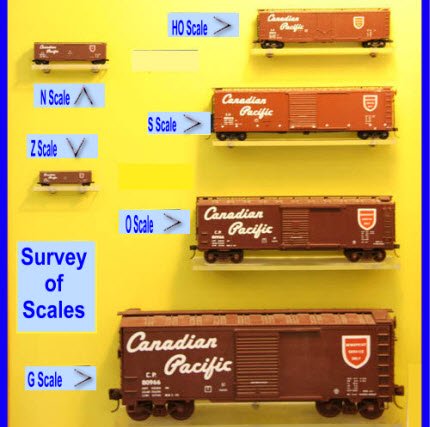|
Scale Decision Key To Hobby EnjoymentFor instance, if you are planning a railroad layout is your main concern running train operations (shipping and receiving) or depicting a particular era? Do you have access to ample space, or are you talking half a room for a layout? Will your eyesight allow detailing a five-inch railroad engine or would you be more comfortable with an engine that exceeds two feet in length? It often depends on the type of scale modeling you do. Those who create static models like wooden ships or plastic planes often alternate between favorite scales to gain a different perspective. Those who model railroads in a layout stick to one scale.
If there is only one kit of the subject they are looking for, then that is the model they will build. Usually, large scale models have the best detail, but the variety of subjects is limited. The biggest variety is found in 1/72 scale and these have adequate detail. It corresponds to one sixth of an inch equaling one foot making a six-foot man an inch tall. It is very popular among aircraft modelers offering a wide enough selection to allow exclusivity for modelers who want to have all aircraft types represented in the same scale. Wikipedia lists 76 different scales ranging from the tiny 1:20,000 (used to depict a very large Zentradi spacecraft from the science fiction anime series Macross) to the large 1:3 (used for articulated dolls with ball and socket joints. Most scale choice decisions are driven more by the modeler’s constraints rather than what is available. Factors such as display area work area and vision capability form the basis for the final decision. Eyesight Figures In Scale Railroad Layout PlansI never gave my eyesight much thought when I was considering which scale to get involved with for my layout. As I remember it, the decision was driven more by space constraints.
I ended up with a space about 6" X 12'I built everything around a four-foot square at the door which was a place to stand. I forgot the fact I would need a workbench and I needed room for a winter heater. The final choice was N Scale. With the double wishbone on one side and a looop on the other resulting in about a 40-foot run. In N-Scale that runs out to a little over a scale mile. Worked pretty good 30 years ago when I had 20-20 vision. Now...not so good. Between the glasses, am Optivisor and even a magnifying glass, well, you get the picture.
|
Quick-Finder





